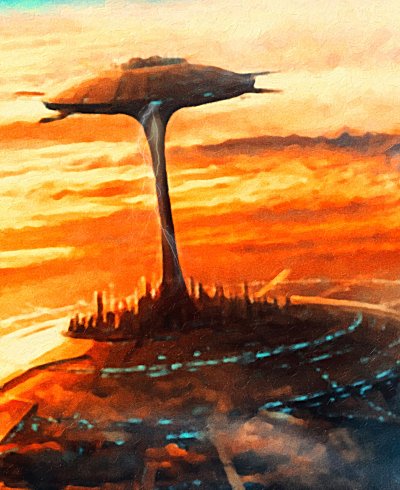Introduction
During the twentieth century, humans speculated that there were aliens on Mars, calling them, "Martians". But when humans colonized mars, they found no aliens there, and became the Martians themselves.

At some point in time, a number of Mars colonies have developed into neo-metropolises. These neo-metropolises have domes around them to secure an atmosphere for the population. Mars colonies were self-sufficient. By the third newborn generation, the Mars colonists grew tiresome of Earth's rule. Why should they pay taxes to governments on Earth, if they are now only relying on themselves to survive? They saw no reason to pay taxes to a 'remote' government. They had been self-reliant all along. A 'local' government was better suited for their needs. So they declared independence.

Earth, itself, as the forefather, did not want to lose its newest colonies, at the time. It responded by senting in troops to suppress the uprise. Earth was surprised to see that many Mars-native military personnels were supporting the revoltion. Even more surprising was that they converted their construction and maintenance cyberoids into military, combat cyberoids. Even unarmed cyberoids were used in hand-to-hand combats.
Soon, United Nations signed contracts with various defense corporations to produce military combat cyberoids to fight the war. After a three year revolution, United Nations finally supressed the Mars colonies' independence. It was a bitter war and caused Mars colonists to feel a harsh coldness toward mother Earth.
Even after the suppression, the rebel groups, now fugitives, reformed and joined high-tech bandits, preying on U.N. and merchant space vessels. To this date, conflicts still erupted from several Mars liberation groups.
Cyberoids on Mars
Mars is an extrordinary place for space-age cyberoid design, because there is a much thinner atmosphere around the planet than Earth. It is also bigger than the moon, which allow the cyberoid prototypes to be tested to their fullest potential. Cyberoids that are designed on Mars generally receive a performance boost in space, but is penalized in high gravity atmostphere.
The ability to create high-performance, space-capable cyberoids on Mars allows larger, more sophisticated vessels to be build in space. These vessels can not be build on high gravity-pull planets, because their thrusters are not powerful enough blast off the surface.
Asteroid Belt
An orbit filled with more than 30,000 asteroids lies between the orbits of Mars and Jupiter, The largest asteroid, Ceres, is just over 620 miles in diameter. Most of these asteroids are small. Some are even pebble-size. The distribution of asteroid is not uniform in the belt. Rather, there exist several clear areas or gaps.

Research institutes have taken up interests in the asteroid composition. Many privateers and mining corporations are also involved in extracting valueable minerals from the astroid belt.
Various high-tech bandits and space pirates have used the asteroid belts as hide-outs and bases of their smuggling operations. Although the United Nations Federation have established an law enforcement program to alleviate the problem, the bandits are extremely successful at evading and neutralizing patrols.

The bandits and pirates fought mostly with modified versions of outdated U.N. equipment. Their fighters, ammunitions, and vessles were generally brought in by rebel members from the revolution. With limited amount of resources, the bandits are bound to lose.
Unfortunately, a number of sources, unknown to the U.N., are fueling their efforts. These sources could be a large corporation paying dues, another federation fighting the U.N., or even a politician playing political games. (GM may consider linking the second possibility to the uprising federation in the Space Worlds supplement.)
Bandit Tribes
Bandit members are part of numerous unorganized, savage warrior tribes. Although they constantly trouble the U.N., they all have uncommon goals in mind. Some are involved purely for the money, some are trying to liberate U.N.'s control on Mars, others are simply trying to make a living for their family.
The bandit tribes often cooperate with one another against the U.N. However, the handful of tribes also fought each other regularily over disbutes and arguments. The lives of the bandit members are stressful. The continual pressure of winning, staying alive, and the fear of double-cross dim the rainbow at the end of a rainy day. The older bandit members are saving up their earnings for a chance to leave this destitute situation; to live a peaceful life somewhere else. At the other extreme, younger, more rebellious, amateur bandits are seeking desperately to get in for a taste of the action.
Corporate Defense
Unlike the U.N. vessels, most corporate merchant spacecrafts are unarmed. They are easy targets for space bandits to capture and plunder. Spance bandits gains new recruits in this fashion; many shipmates rather join the bandits, than to perish in the plunder.
Over time, many smaller corporations filed bankruptcy due to financial loses caused by the plunder. To ensure safe crossing, U.N. provides escort services to all in need. However, to apply for and to receive U.N. service is an extremely difficult task, complicated by bureaucracy.


